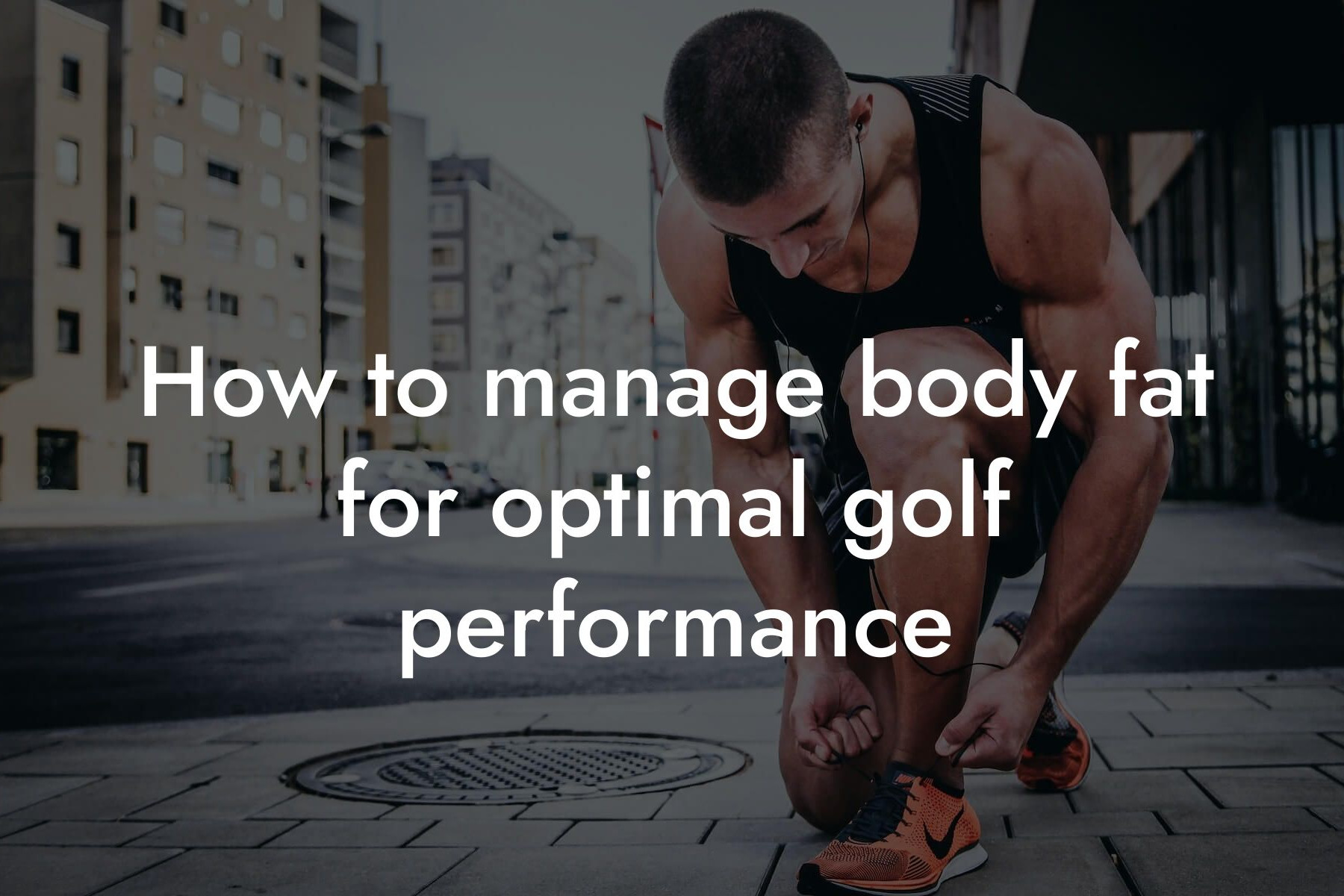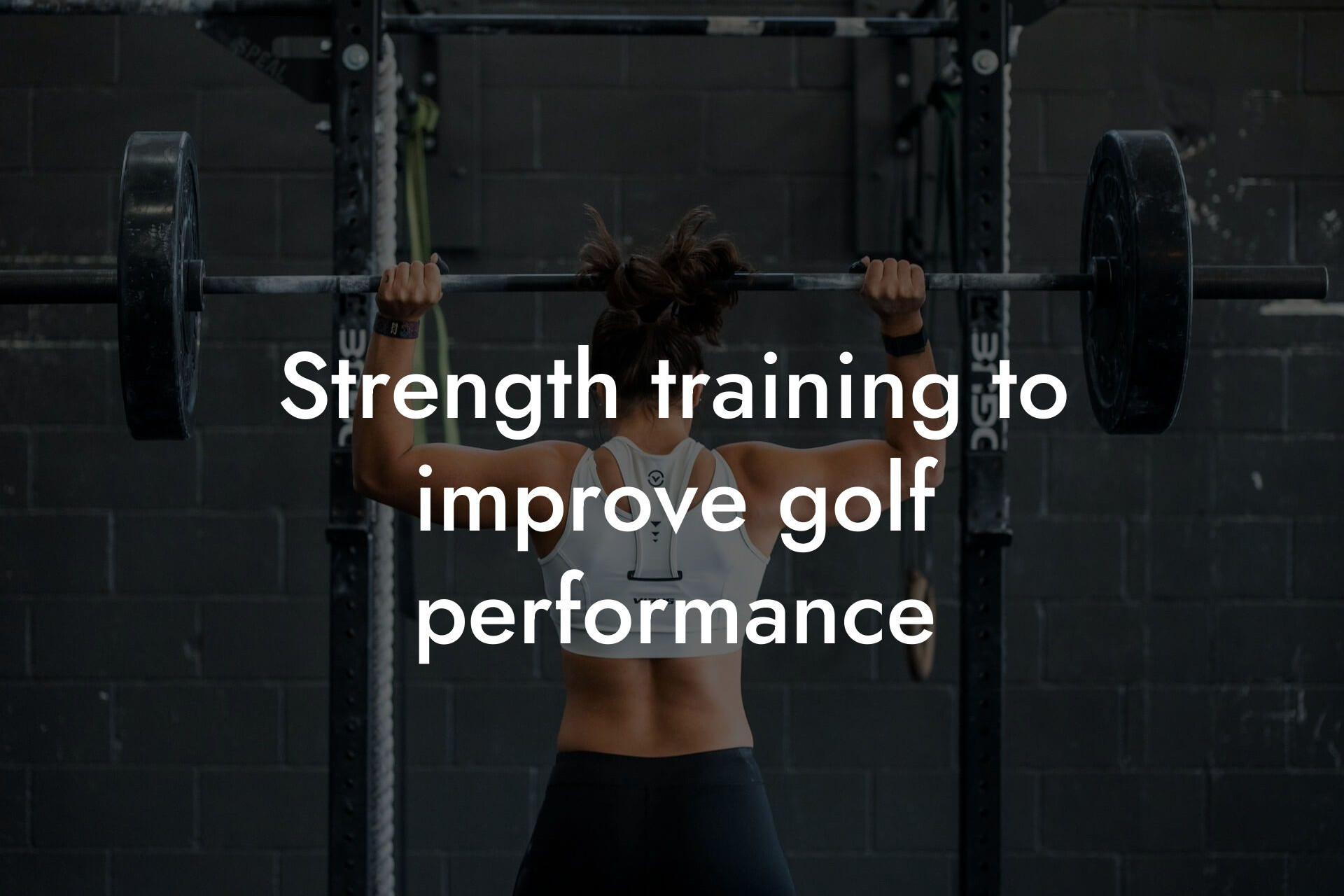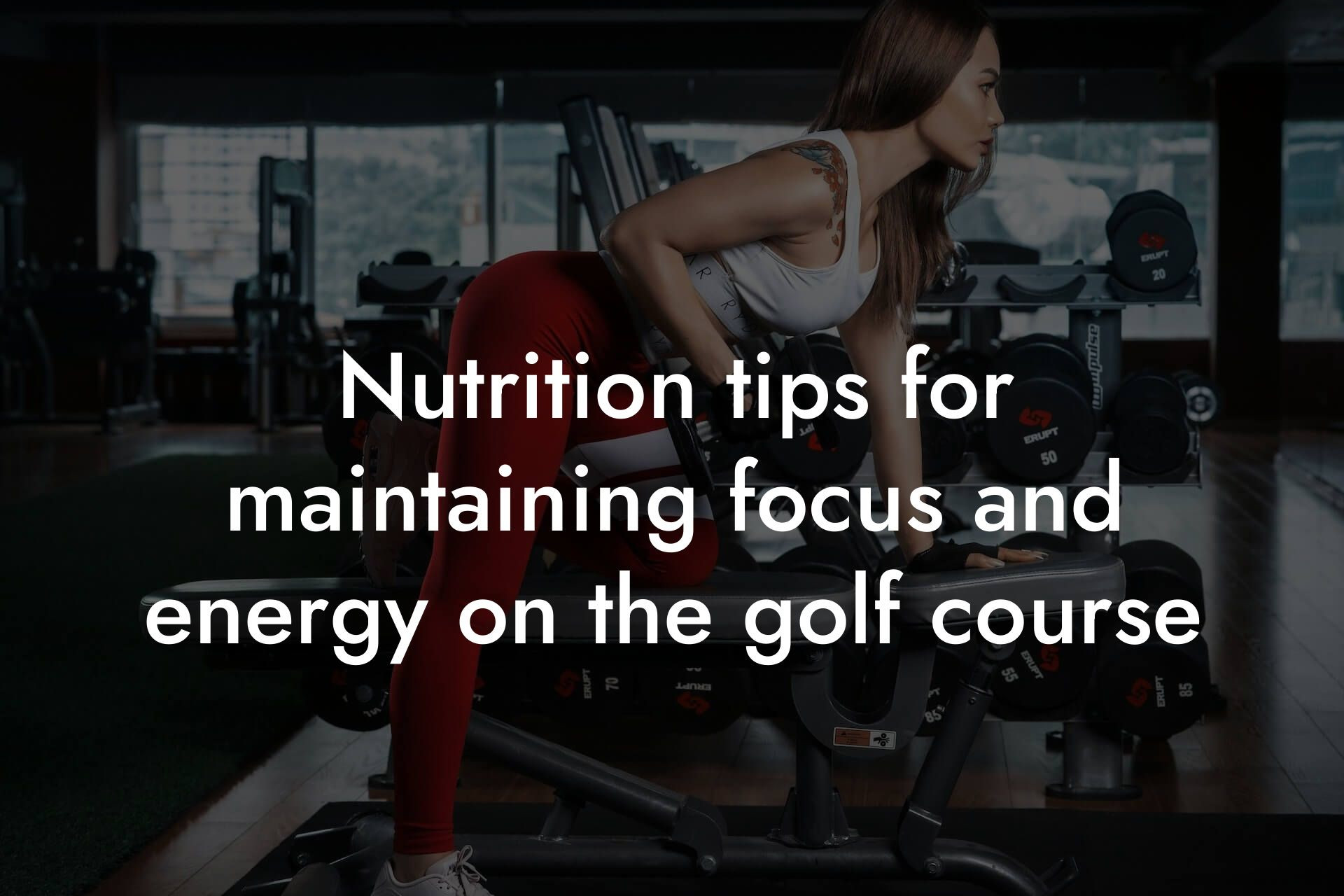As a golfer, you understand the importance of maintaining a healthy body to perform at your best on the course. One crucial aspect of overall health that is often overlooked is bone density. Low bone density can lead to injuries, which can not only sideline you from the game but also impact your daily life. In this article, we'll delve into the relationship between bone density and injury prevention in golf, and provide you with actionable tips to improve your bone health and reduce your risk of injury.
Table of Contents
Bone Density 101
Bone density refers to the measure of how dense and strong your bones are. It's calculated by measuring the amount of minerals, such as calcium, in your bones. Peak bone density is typically reached in early adulthood, and it naturally declines with age. However, certain factors, such as genetics, nutrition, and physical activity, can influence bone density.
Why Bone Density Matters in Golf
Golf is a low-impact sport, but it still requires strength, flexibility, and coordination. Golfers are at risk of developing osteoporosis, a condition characterized by brittle and porous bones, which can lead to fractures and injuries. Low bone density can also contribute to chronic back pain, a common complaint among golfers. Furthermore, poor bone density can affect your posture, balance, and overall athletic performance.
The Risks of Low Bone Density in Golf
Golfers with low bone density are more susceptible to injuries, particularly in the spine, hips, and wrists. The most common injuries associated with low bone density in golf include:
- Vertebral fractures: Compression fractures in the spine can occur due to osteoporosis, leading to chronic back pain and limited mobility.
- Hip fractures: Falls or direct blows to the hip can cause fractures, which can be debilitating and require surgical intervention.
- Wrist fractures: Golfers with low bone density are more likely to experience wrist fractures, which can affect their grip and swing.
Factors Affecting Bone Density in Golfers
Several factors can influence bone density in golfers, including:
- Age: Bone density naturally declines with age, making older golfers more susceptible to osteoporosis.
- Genetics: Family history and genetic predisposition can affect bone density.
- Nutrition: A diet lacking essential nutrients, such as calcium and vitamin D, can contribute to low bone density.
- Physical activity: Inadequate exercise or a sedentary lifestyle can lead to poor bone density.
- Hormonal changes: Hormonal fluctuations, particularly in women, can affect bone density.
DEXA Scan: The Gold Standard for Bone Density Measurement
A DEXA (Dual-Energy X-ray Absorptiometry) scan is the most accurate and reliable method for measuring bone density. This non-invasive test uses X-rays to measure bone mineral density, providing a detailed report on your bone health. At Tano Performance Group, we use state-of-the-art DEXA machines to provide golfers with a comprehensive body assessment, including bone density measurements.
Improving Bone Density for Injury Prevention in Golf
Fortunately, there are several ways to improve bone density and reduce the risk of injuries in golf:
- Engage in regular exercise: Weight-bearing exercises, such as strength training and high-impact aerobics, can help improve bone density.
- Maintain a balanced diet: Ensure your diet is rich in calcium, vitamin D, and other essential nutrients for bone health.
- Get enough vitamin D: Vitamin D is crucial for calcium absorption and bone health. Spend time outdoors, take vitamin D supplements, or consume vitamin D-rich foods.
- Reduce fall risk: Improve your balance and coordination through exercises like tai chi or yoga to reduce the risk of falls.
- Manage chronic conditions: If you have a chronic condition, such as diabetes or rheumatoid arthritis, work with your healthcare provider to manage it effectively and reduce its impact on bone density.
Additional Tips for Golfers
In addition to improving bone density, golfers can take the following steps to reduce their risk of injury:
- Warm up and cool down: Always warm up before playing and cool down afterwards to prevent muscle strains and improve flexibility.
- Stretch regularly: Incorporate stretching exercises into your daily routine to improve flexibility and reduce muscle tension.
- Strengthen your core: A strong core can help improve your posture, balance, and overall athletic performance.
- Use proper technique: Learn proper golfing techniques to reduce the risk of injury and improve your overall game.
By understanding the importance of bone density and taking proactive steps to improve it, golfers can reduce their risk of injury and maintain peak performance on the course. At Tano Performance Group, we're committed to helping high-earning professionals like you achieve optimal physical health and performance. Contact us today to schedule a DEXA scan and take the first step towards a stronger, healthier you.
Frequently Asked Questions
What is bone density, and why is it important for golfers?
Bone density refers to the measure of how dense and strong your bones are. As golfers age, their bone density can decrease, making them more prone to injuries and fractures. Maintaining good bone density is essential for golfers to perform at their best and reduce the risk of injuries.
How does golfing affect bone density?
Golfing can have both positive and negative effects on bone density. On the positive side, golfing can help improve bone density in the hips, legs, and spine due to the weight-bearing nature of the sport. However, the repetitive twisting and turning motions in golf can also lead to a decrease in bone density in the spine and hips if proper precautions are not taken.
What are the common injuries associated with low bone density in golfers?
Low bone density in golfers can increase the risk of injuries such as stress fractures, vertebral compression fractures, and osteoporotic fractures. These injuries can be debilitating and require extended periods of rest and recovery, which can be detrimental to a golfer's performance and overall well-being.
How can I maintain good bone density as a golfer?
Maintaining good bone density as a golfer requires a combination of proper nutrition, regular exercise, and good golfing techniques. A diet rich in calcium and vitamin D, along with regular weight-bearing exercises, can help improve bone density. Additionally, using proper golfing techniques, such as maintaining a straight back and avoiding excessive twisting, can also help reduce the risk of injuries.
What are the benefits of good bone density for golfers?
Good bone density can provide numerous benefits for golfers, including improved performance, reduced risk of injuries, and enhanced overall well-being. Golfers with good bone density tend to have more power, stability, and endurance, allowing them to perform at their best.
How can I improve my bone density through nutrition?
A diet rich in calcium and vitamin D is essential for improving bone density. Foods that are high in calcium include dairy products, leafy greens, and fortified cereals, while vitamin D can be obtained through sun exposure, supplements, or fortified foods. Additionally, a diet high in protein and omega-3 fatty acids can also help support bone health.
What exercises can I do to improve my bone density?
Weight-bearing exercises, such as squats, lunges, and deadlifts, can help improve bone density in the hips, legs, and spine. Resistance band exercises and bodyweight exercises can also be effective in improving bone density. It's essential to incorporate exercises that target multiple muscle groups and to challenge yourself progressively over time.
How can I reduce the risk of injuries through proper golfing techniques?
Proper golfing techniques, such as maintaining a straight back, avoiding excessive twisting, and using a smooth and controlled swing, can help reduce the risk of injuries. Additionally, taking regular breaks, stretching, and warming up before playing can also help prevent injuries.
What are the signs and symptoms of low bone density?
The signs and symptoms of low bone density can be subtle and may not appear until a fracture or injury occurs. However, some common signs and symptoms include back pain, stooped posture, and loss of height. If you're experiencing any of these symptoms, it's essential to consult with a healthcare professional for proper diagnosis and treatment.
How can I get my bone density tested?
Bone density tests, such as dual-energy X-ray absorptiometry (DXA) or peripheral dual-energy X-ray absorptiometry (pDXA), can help measure bone density. These tests are usually performed by a healthcare professional and can provide valuable insights into your bone health.
What are the treatment options for low bone density?
Treatment options for low bone density may include medication, hormone replacement therapy, and lifestyle changes. Medications such as bisphosphonates and hormone replacement therapy can help improve bone density, while lifestyle changes such as regular exercise, proper nutrition, and reducing the risk of falls can also be effective.
How can I prevent osteoporosis as a golfer?
Preventing osteoporosis as a golfer requires a combination of proper nutrition, regular exercise, and good golfing techniques. A diet rich in calcium and vitamin D, along with regular weight-bearing exercises, can help improve bone density and reduce the risk of osteoporosis. Additionally, using proper golfing techniques and taking regular breaks can also help prevent osteoporosis.
What is the relationship between bone density and body fat?
Bone density and body fat are closely linked. Excess body fat can increase the risk of osteoporosis and low bone density, while a healthy body fat percentage can help support bone health. Maintaining a healthy body fat percentage through a combination of proper nutrition and regular exercise can help improve bone density and overall well-being.
How can I improve my overall physique as a golfer?
Improving your overall physique as a golfer requires a combination of proper nutrition, regular exercise, and good golfing techniques. A diet rich in protein, healthy fats, and complex carbohydrates, along with regular strength training and cardiovascular exercises, can help improve your physique and enhance your golfing performance.
What are the benefits of good physique for golfers?
Good physique can provide numerous benefits for golfers, including improved performance, reduced risk of injuries, and enhanced overall well-being. Golfers with good physique tend to have more power, stability, and endurance, allowing them to perform at their best.
How can I reduce my body fat percentage as a golfer?
Reducing body fat percentage as a golfer requires a combination of proper nutrition and regular exercise. A diet low in processed foods, sugar, and saturated fats, along with regular cardiovascular exercises and strength training, can help reduce body fat percentage and improve overall physique.
What are the common mistakes golfers make that can lead to injuries?
Common mistakes golfers make that can lead to injuries include poor golfing techniques, inadequate warm-up and cool-down, and ignoring early signs of fatigue and pain. Additionally, failing to address underlying health issues, such as low bone density, can also increase the risk of injuries.
How can I prevent injuries as a golfer?
Preventing injuries as a golfer requires a combination of proper nutrition, regular exercise, and good golfing techniques. A diet rich in calcium and vitamin D, along with regular weight-bearing exercises, can help improve bone density and reduce the risk of injuries. Additionally, using proper golfing techniques, taking regular breaks, and addressing underlying health issues can also help prevent injuries.
What are the benefits of working with a fitness professional as a golfer?
Working with a fitness professional as a golfer can provide numerous benefits, including improved performance, reduced risk of injuries, and enhanced overall well-being. A fitness professional can help create a personalized exercise program that addresses your specific needs and goals, allowing you to perform at your best.
How can I incorporate strength training into my golfing routine?
Incorporating strength training into your golfing routine can be done by setting aside 2-3 times per week for strength training exercises. Focus on exercises that target multiple muscle groups, such as squats, lunges, and deadlifts, and challenge yourself progressively over time.
What are the benefits of stretching and foam rolling for golfers?
Stretching and foam rolling can provide numerous benefits for golfers, including improved flexibility, reduced muscle soreness, and enhanced overall well-being. Regular stretching and foam rolling can help improve your range of motion, reduce the risk of injuries, and enhance your golfing performance.
How can I improve my overall well-being as a golfer?
Improving your overall well-being as a golfer requires a combination of proper nutrition, regular exercise, and good golfing techniques. A diet rich in whole foods, along with regular strength training and cardiovascular exercises, can help improve your overall well-being and enhance your golfing performance.
Here are some related articles you might love...
- How to manage body fat for optimal golf performance
- Strength training to improve golf performance
- Nutrition tips for maintaining focus and energy on the golf course
- The impact of body composition on golf swing power and accuracy
- The role of core strength in golf accuracy
- Recovery strategies for golfers after a tournament
- Off-season fitness programs for golfers
- How DEXA scans can benefit professional golfers
- Maintaining flexibility and muscle mass for a better golf swing
Zak Faulkner
Zak Faulkner is a leading authority in the realm of physical health and body composition analysis, with over 15 years of experience helping professionals optimise their fitness and well-being. As one the experts behind Tano Performance Group, Zak has dedicated his career to providing in-depth, science-backed insights that empower clients to elevate their physical performance and overall health.
With extensive knowledge of DEXA technology, Zak specializes in delivering comprehensive body assessments that offer precise data on body fat, muscle mass, bone density, and overall physique. His expertise enables individuals to make informed decisions and achieve their fitness goals with accuracy and confidence. Zak’s approach is rooted in a deep understanding of human physiology, combined with a passion for helping clients unlock their full potential through personalised strategies.
Over the years, Zak has earned a reputation for his commitment to excellence, precision, and client-focused service. His guidance is trusted by top professionals who demand the best when it comes to their health. Whether advising on fitness programs, nutritional strategies, or long-term wellness plans, Zak Faulkner’s insights are a valuable resource for anyone serious about taking their health and fitness to the next level.
At Tano Performance Group, Zak continues to lead our Content Team revolutionising how professionals approach their physical health, offering unparalleled expertise that drives real results.




